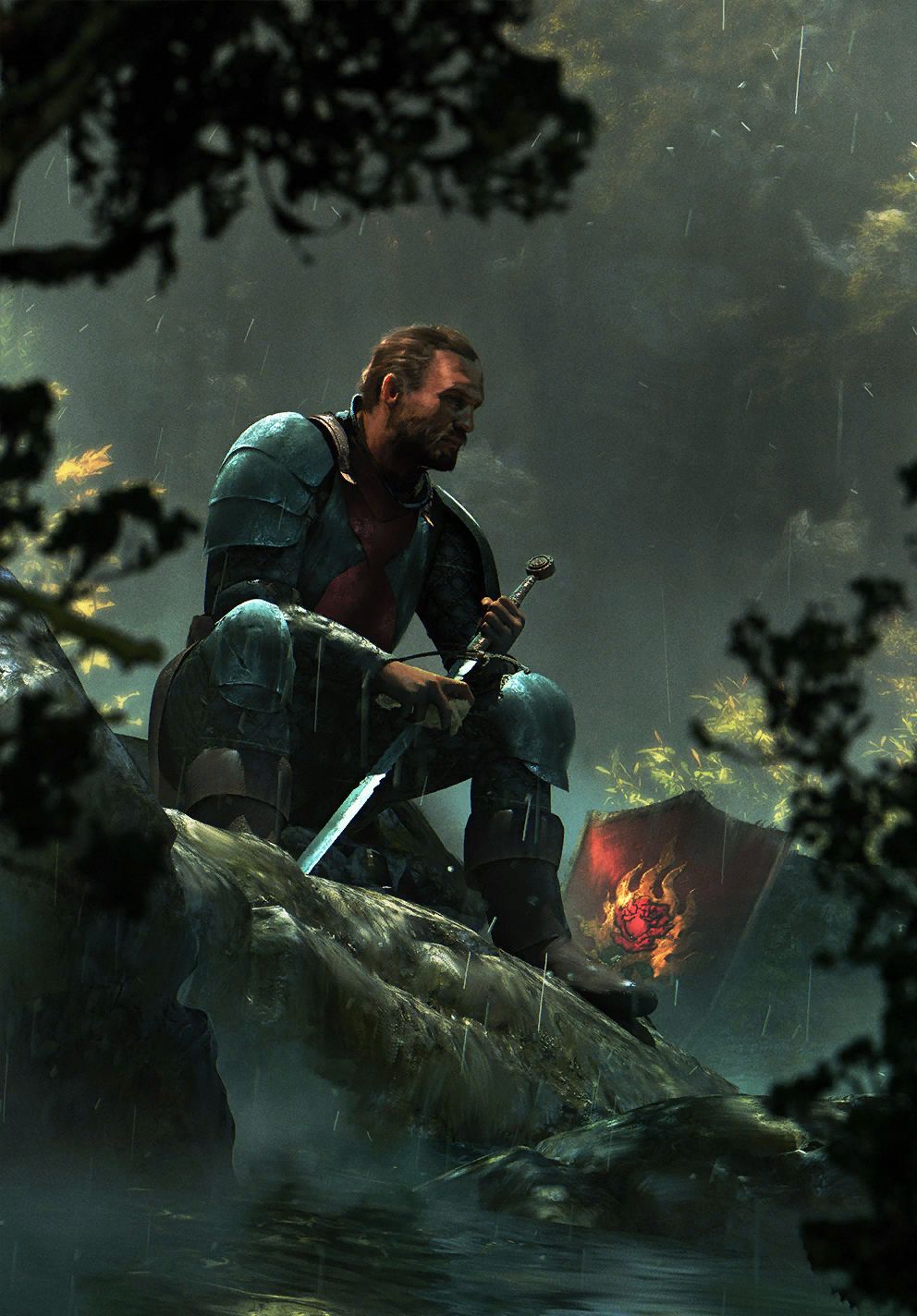
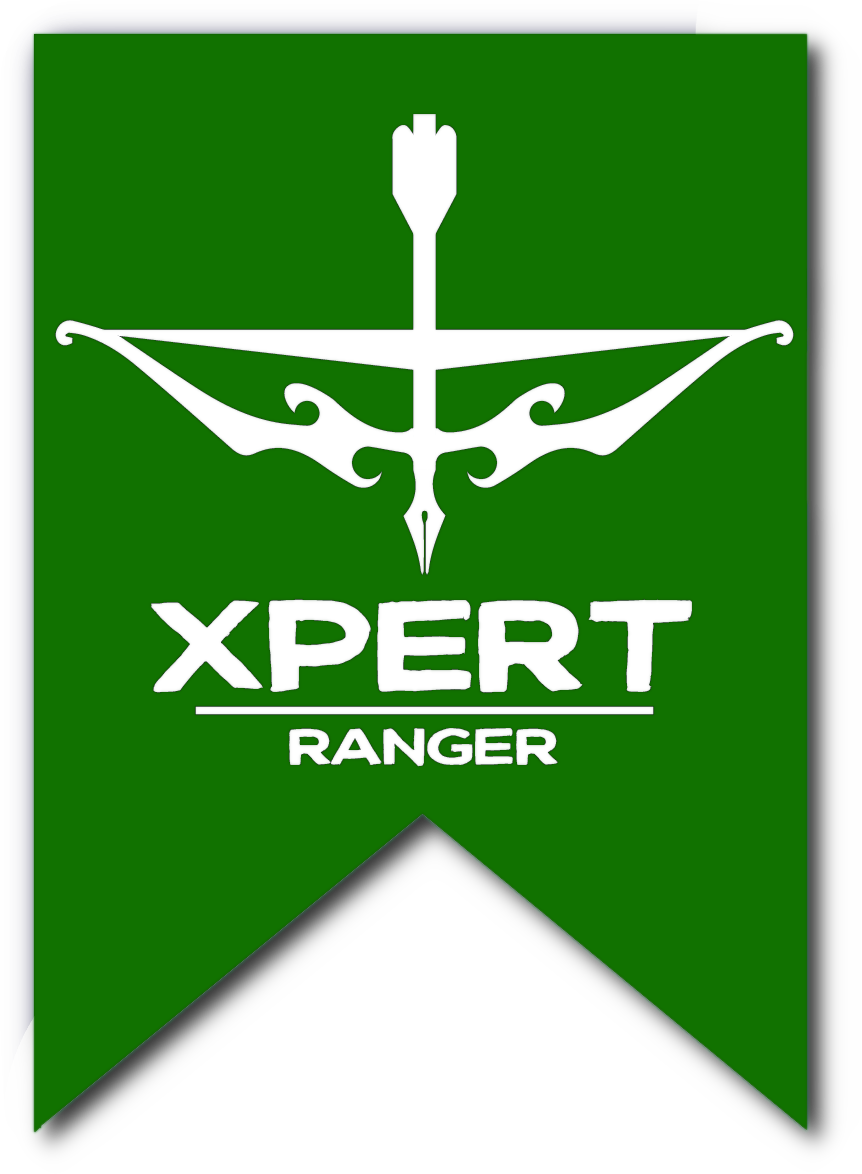
Guardian
A stoic dwarf in full plate stands tall amidst a flaming inferno as he stares down a red dragon many times his size. He takes a steadying breath and raises his shield, preparing for yet another onslaught of whirling claws and gnashing teeth.
From the back of a rowdy tavern, a smug-looking human in worn-down chain mail hurls insults back and forth with a group of grizzled miners, eventually finding himself battered, bruised, and banned from yet another local tavern.
Swarmed by a writhing horde of undead, an elf in gleaming white armor coats her blade with the ichor of one approaching monstrosity after another, all while keeping the frightened young tiefling wrapped around her ankle safe and secure.
When the situation is at its most dire, there is no one better to have at your side than a guardian. These stalwart warriors use their inciting taunts and impregnable defenses to become a living wall between their allies and certain doom. Whether a guardian is a valiant knight, silver-tongued sellsword, or stubborn general, they all excel at guiding their comrades through the most hopeless of circumstances and emerging victorious on the other side.
Defensive Combatants
At their core, guardians don't differ much from other physical combatants in the world of Dungeons and Dragons. Using their martial prowess to overcome a foe is nothing new to a guardian. However, unlike their martial cousins who prefer to swing at an enemy until it falls, guardians take a more defensive approach to dealing with threats. Blocks or parries take precedence over swings or thrusts, and a sturdy guard is a key tool in any guardian's toolkit.
While all guardians share a defense that rivals the greatest knights of the realms, they differ in their methods of defending. Some guardians simply defend themselves with a shield, some augment their defenses with magic, and some use cunning words to defend themselves on the social battlefield. However they choose to defend themselves, you can be sure that cracking the defense of a guardian is no easy feat.
Force of Personality
Though they serve their purpose, a shields or weapons aren't the only tools that a guardian carries into battle. Alongside the equipment that can be seen upon their backs, each guardian carries themselves with a powerful demeanor that both allies and enemies alike can feel with just a glance.
In combat, guardians use this palpable social aura along with taunting words or threatening actions to draw the anger and hostility out of their enemies. Though they might not enjoy taking the beating that follows, a guardian will wear the battle scars proudly, knowing that each one could have instead been worn by a valued comrade.
Creating a Guardian
As you create your guardian character, think about why, or if, your character chooses to protect others. What led you to hone your defenses to the point that they became your weapon? Is there a certain group that trained you to protect others, or perhaps a group that you were trained to protect? A wise and caring mentor, the unique skills and weapons of your homeland, or a former ward or occupation could all have been factors.
You might have failed to protect a loved one and vowed to never let it happen again. Perhaps you were saved by a legendary guardian and aspire to become like them. You could have been trained by the city watch to defend the public from those that would endanger them. Maybe you simply excelled at defending to the point that it became your style of fighting. Whatever your reason for becoming a guardian, your indomitable will and your armor now stand as a towering shield defending yourself and your allies.
Quick Build
You can make a guardian quickly by following these suggestions. First, your Strength score should be at least 15; this will allow you to wear any set of heavy armor you desire. Then, your highest score should be Constitution, followed by Charisma. Finally, choose the knight background.
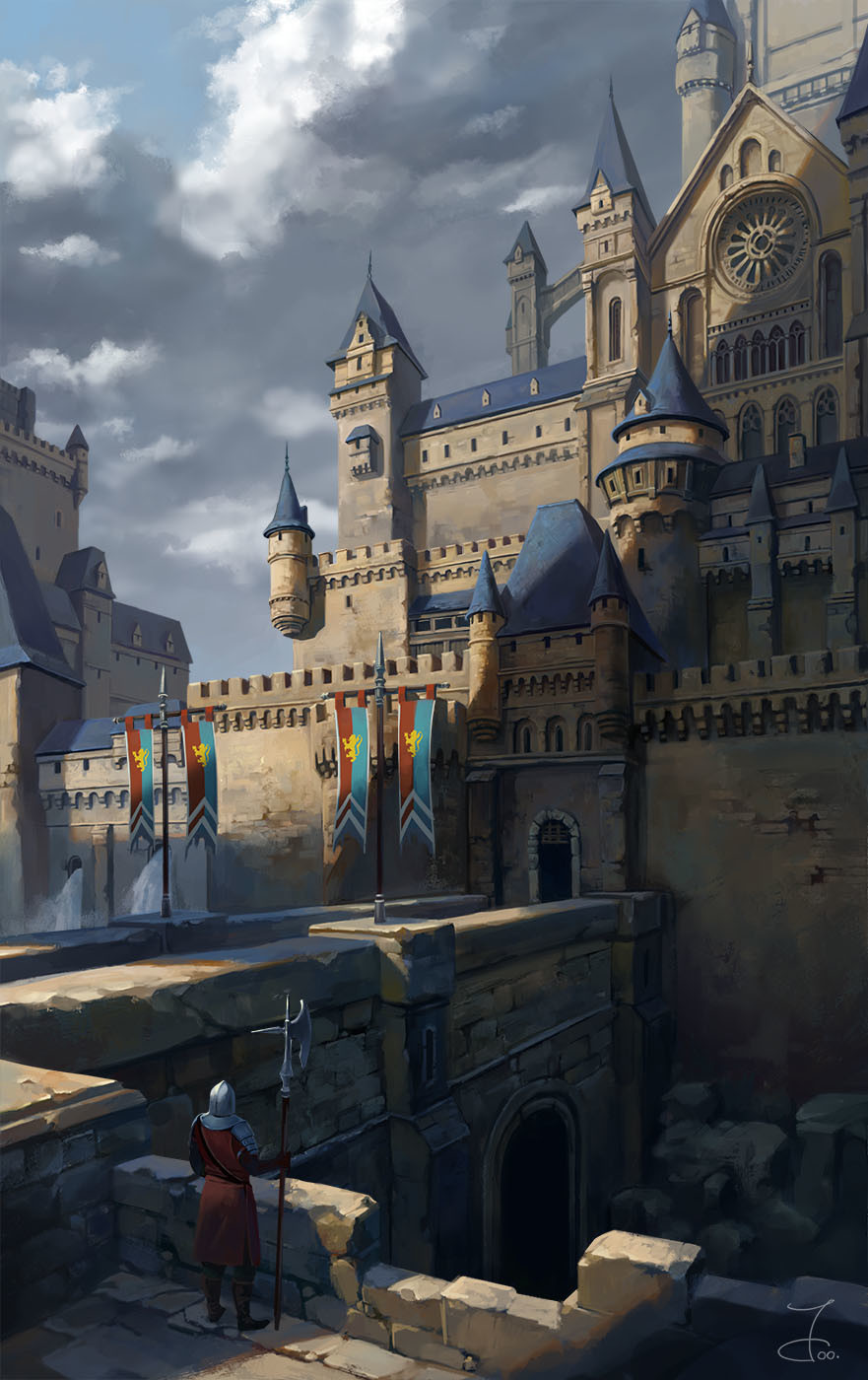

The Guardian
| Level | Proficiency Bonus | Inner Fire die | Features |
|---|---|---|---|
| 1st | +2 | 1d4 | Inner Fire, Heavy Blows, Social Expertise |
| 2nd | +2 | 1d4 | Reactive Fighting, Daring Taunt |
| 3rd | +2 | 1d4 | Defensive Archetype |
| 4th | +2 | 1d4 | Ability Score Improvement |
| 5th | +3 | 1d6 | Extra Reaction, Ferocious Taunt |
| 6th | +3 | 1d6 | Defensive Archetype Feature, Inner Fire Improvement |
| 7th | +3 | 1d6 | Honed Reflexes |
| 8th | +3 | 1d6 | Ability Score Improvement |
| 9th | +4 | 1d8 | Juggernaut |
| 10th | +4 | 1d8 | Unbreakable |
| 11th | +4 | 1d8 | Heavy Blows Improvement |
| 12th | +4 | 1d8 | Ability Score Improvement |
| 13th | +5 | 1d10 | Defensive Archetype Feature |
| 14th | +5 | 1d10 | Unstoppable |
| 15th | +5 | 1d10 | Unbreakable (2) |
| 16th | +5 | 1d10 | Ability Score Improvement |
| 17th | +6 | 1d12 | Extra Reaction (2), Luring Taunt, Honed Reflexes Improvement |
| 18th | +6 | 1d12 | Defensive Archetype Feature |
| 19th | +6 | 1d12 | Ability Score Improvement |
| 20th | +6 | 1d12 | Unyielding Bastion |
Class Features
As a Guardian, you gain the following class features
Hit Points
- Hit Dice: 1d12 per Guardian level
- Hit Points at 1st Level: 12 + your Constitution modifier
- Hit Points at Higher Levels: 1d12 (or 7) + your Constitution modifier per Guardian level after 1st
Proficiencies
- Armor: All armor, shields
- Weapons: Simple weapons, martial weapons
- Tools: None
- Saving Throws: Constitution, Charisma
- Skills: Choose two from Athletics, Deception, Insight, Intimidation, Medicine, Perception, and Persuasion.
Equipment
You start with the following equipment, in addition to the equipment granted by your background:
- (a) a martial weapon and a shield or (b) two martial weapons
- (a) a light crossbow and 20 bolts or (b) two light hammers
- (a) a diplomat's pack
- chain mail
Alternatively, you may start with 5d4 × 10 gp to buy your own equipment.


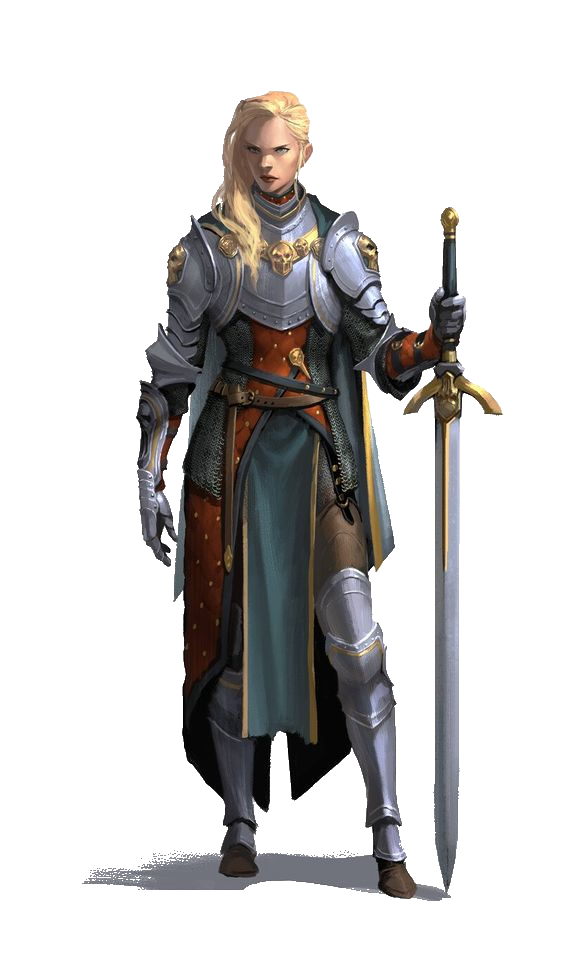
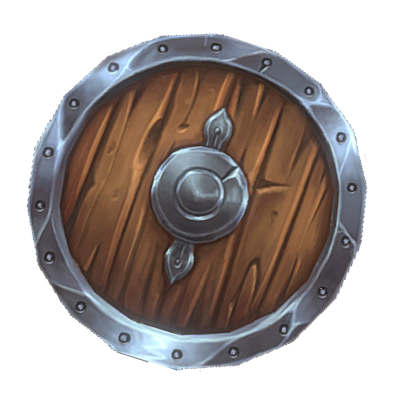
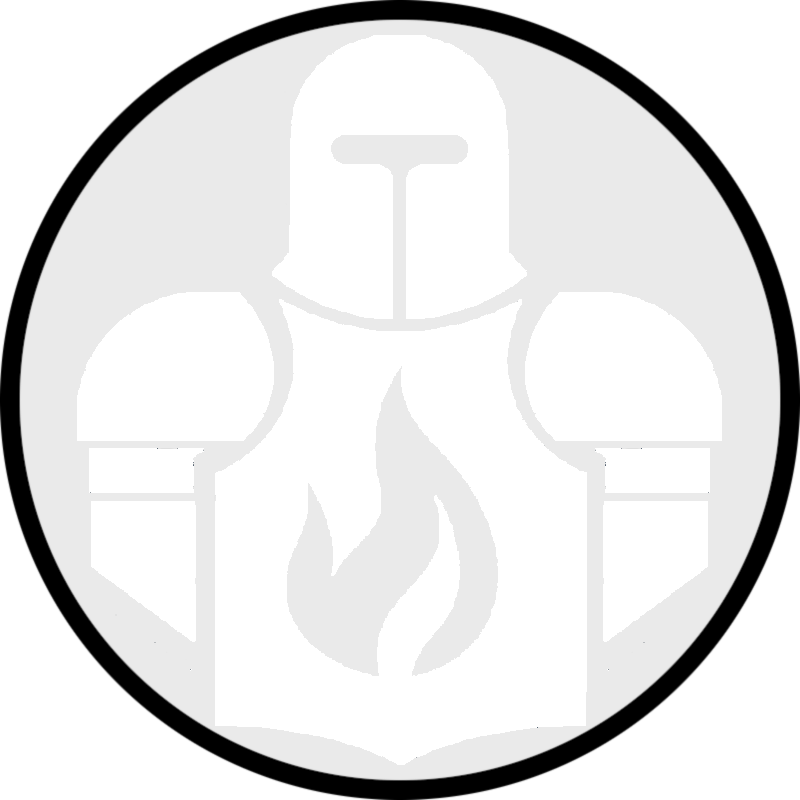
Multiclassing and The Guardian
If your group uses the optional multiclassing rule, here's what you need to know if you choose to take your first level in the guardian class.
Ability Score Minimum. As a multiclass character, you must have at least a Constitution score and a Charisma score of 13 to take a level in this class, or to take a level in another class if you are already a guardian.
Proficiencies. If guardian isn't your initial class, here are the proficiencies you gain when you take your first level as a guardian: light armor, medium armor, shields, simple weapons, and martial weapons.
Guardian save DC
Some of your Guardian features require your target to make a saving throw to resist the feature's effects. The saving throw DC is calculated as follows:
bonus + your Charisma modifier
Inner Fire
You have a fire within you that allows you to press on through blows that would bring others to their knees. Bludgeoning, piercing, and slashing damage that you take is reduced by your Inner Fire die (to a minimum of 1 damage) while you meet the following conditions:
- You are wearing armor
- You are not incapacitated
Your Inner Fire die is a special die that changes as you level up as shown on the guardian table.
Starting at 10th level, your Inner Fire feature is effective against all damage types, instead of only bludgeoning, piercing, and slashing.
Heavy Blows
You put your full weight behind your attacks. Once per turn, when making an attack with a melee weapon that lacks the finesse property, you use your choice of your Strength or Constitution modifier for the attack and damage rolls. You must use the same modifier for both rolls. Additionally, you can use Constitution(Athletics), instead of Strength(Athletics), when you attempt to shove or grapple a creature.
Starting at 11th level, the first time you hit a creature with a melee weapon attack on each of your turns, you can add your Inner Fire die to the damage of the attack and attempt to shove the target as part of the attack.
Reactive Fighting
Starting at 2nd level, you take a more reactive approach to combat than most, favoring blocks and punishing reactions over more aggressive maneuvers. You gain the Harrying Strike and Stand Behind Me reactions:
Harrying Strike
When a creature you can see within 10 feet of you moves away from you, you can use your reaction to move up to 5 feet towards it then make a melee weapon opportunity attack against it. You cannot use this feature on a creature you've attacked since the end of your last turn. Movement that doesn't provoke opportunity attacks also doesn't trigger this reaction.
Stand Behind Me
When a creature you can see within 10 feet of you, other than you, takes damage from an effect you can see, you can use your reaction to move up to 5 feet towards them and, if they are within 5 feet of you, reduce the damage they take by your guardian level + your proficiency bonus (to a minimum of 0 damage). Then, you take damage of the same type equal to the amount reduced.
Xpert Advice: Damage Reduction
Damage reduction is applied to total damage before resistances are calculated (PHB p197)
Daring Taunt
Also at 2nd level, you make tactical use of taunting words and actions. As an action or bonus action, choose a creature you can see within 30 of you that can see or hear you. It must make a Wisdom saving throw. On a failure, it suffers the following effects until the start of your next turn:
- It has disadvantage on attack rolls against targets other than you
- When it uses a damaging spell or damagaing effect that doesn't require it to make an attack roll, the effect must include you as a target or include you in its area of effect
The effects of your taunt end if you end your turn more than 30 feet away from a taunted creature.
Defensive Archetype
Also at 3rd level, you choose an archetype which determines how you will protect your allies from the list of available archetypes. Your archetype choice grants you features at 3rd level and then again at 6th, 13th, and 18th level.
Ability Score Improvement
When you reach 4th level, and again at 8th, 12th, 16th, and 19th level, you can increase one ability score of your choice by 2, or you can increase two ability scores of your choice by 1. As normal, you can’t increase an ability score above 20 using this feature.
Using the optional feats rule, you can forgo taking this feature to take a feat of your choice instead.
Extra Reaction
Starting at 5th level, when you end your turn without using your action to cast a spell or use a magic item, you can take an additional reaction before the start of your next turn. You can only use one reaction per triggering effect. When you cast a spell as a reaction, you can't do so again until the start of your next turn.
The number of additional reactions granted by this feature increases to two when you reach 17th level in this class.
Xpert Advice: Regaining Reactions
When relevant, a creature regains its reaction at the start of its turn, not the end (PHB p190). A Guardian functions similarly, regaining all of their reactions at the start of their turn
Ferocious Taunt
Also at 5th level, your taunts take a noticeable toll on your opponent's psyche. Your Daring Taunt feature gains the following effect in addition to its normal effects:
- It immediately takes psychic damage equal to your Inner Fire die. If damage from this effect would reduce a target to 0 hit points, it drops to 1 hit point instead.
Additionally, when a creature succeeds on its saving throw to resist your Daring Taunt feature, you can choose to give it advantage on attack rolls against you until the start of your next turn. If you do, it suffers a single effect of your Daring Taunt feature of your choice.
Honed Reflexes
At 7th level, you are a master of reacting to the opportunities presented to you. The range and movement of your Reactive Fighting features increase by 5 feet, to 15 feet of range and 10 feet of movement.
The range and movement of these features increase by 5 feet again when you reach 17th level in this class, to 20
feet of range and 15 feet of movement.
Juggernaut
At 9th level, you press through movement impairing effects with ease. While you are conscious, your move speed cannot be reduced without setting it to 0.
Additionally, you are immune to the effects of difficult terrain.
Unbreakable
At 10th level, your unbreakable willpower shines through in the moments when you need it most. When you take damage, you can use your reaction to reduce the damage by an amount equal to three times your Guardian level.
Once you use this feature, you must finish a long rest before you can use it again. You can use this feature twice between long rests starting at 15th level.
Unstoppable
Beginning at 14th level, your approach has become a near inevitability for most foes. You have advantage on ability checks and saving throws to prevent or end the frightened, grappled, prone, restrained, paralyzed or stunned condition and against effects that move or teleport you against your will.
Luring Taunt
At 17th level, your taunts make you even harder to ignore. Your Daring Taunt feature gains the following effect in addition to its normal effects:
- It must spend 2 feet of movement for every 1 foot it moves when moving away from you
Unyielding Bastion
At 20th level, even on the verge of collapse, you will serve as a aegis against the darkness for those in need. While you have no more than half of your hit points left the damage reduction of your Inner Fire feature is doubled.


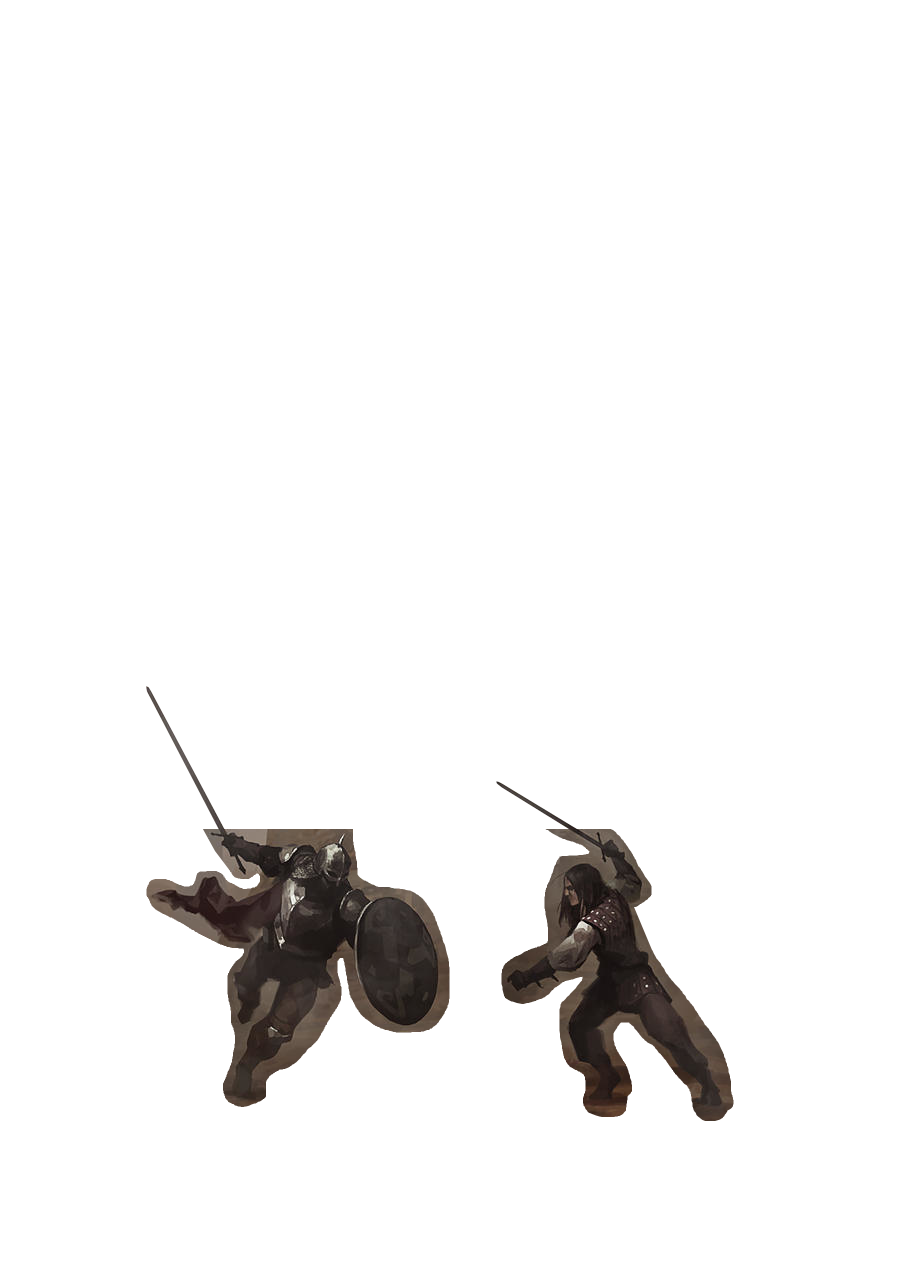
Defensive Archetypes
When it comes to defending themselves and their allies, all guardians are experts. However, each individual guardian may differ in who, how, and why they offer this protection. Your archetype represents the skills and techniques you use to keep those under your protection safe.
Mystic Herald
Mystic Heralds augment their defenses with magics borrowed from the teachings of bards, using arcane magic channeled through rousing words or music to defend themselves and their allies.
Spellcasting
When you reach 3rd level, you augment your defenses with the ability to cast spells. See chapter 10 for the general rules of spellcasting and chapter 11 for the bard spell list.
Cantrips. You learn three cantrips: guidance and two of your choice from the bard spell list. You learn an additional bard cantrip of your choice at 10th level.
Spell Slots. The Mystic Herald Spellcasting table shows how many spell slots you have to cast your bard spells of 1st level and higher. To cast one of these spells, you must expend a slot of the spell's level or higher. You regain all expended spell slots when you finish a long rest. For example, if you know the 1st-level spell shield and have a 1st-level and a 2nd-level spell slot available, you can cast healing word using either slot.
Spells Known of 1st-Level and Higher. You know three 1st-level bard spells of your choice from the bard spell list, one of these spells can come from any class's spell list instead.
The Spells Known column of the Mystic Herald Spellcasting table shows when you learn more bard spells of 1st level or higher. Each of these spells must be of a level for which you have spell slots. For instance, when you reach 7th level in this class, you can learn one new spell of 1st or 2nd level.
The spells you learn at 8th, 14th, and 20th level can come from any class's spell list.
Whenever you gain a level in this class, you can replace one of the bard spells you know with another spell of your choice from the bard spell list. The new spell must be of a level for which you have spell slots, and it must be an abjuration or enchantment spell. When replacing the spell you gained at 3rd, 8th, 14th, or 20th level it can come from any class's spell list instead.
Spellcasting Ability. Charisma is your spellcasting ability for your bard spells, since your magic comes from the heart and soul you pour into protecting your allies. You use your Charisma whenever a spell refers to your spellcasting ability. In addition, you use your Charisma modifier when setting the saving throw DC for a bard spell you cast and when making an attack roll with one.
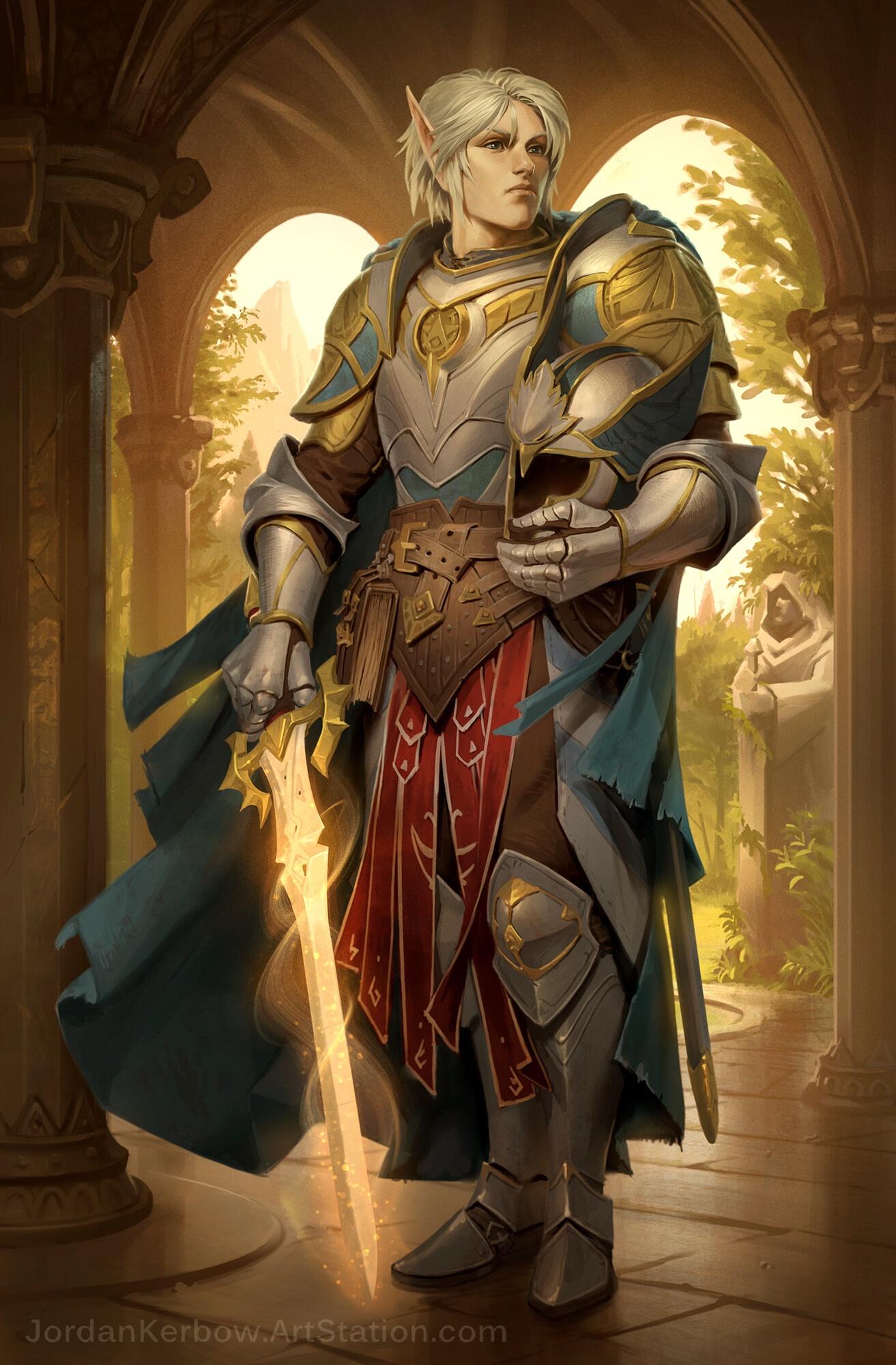

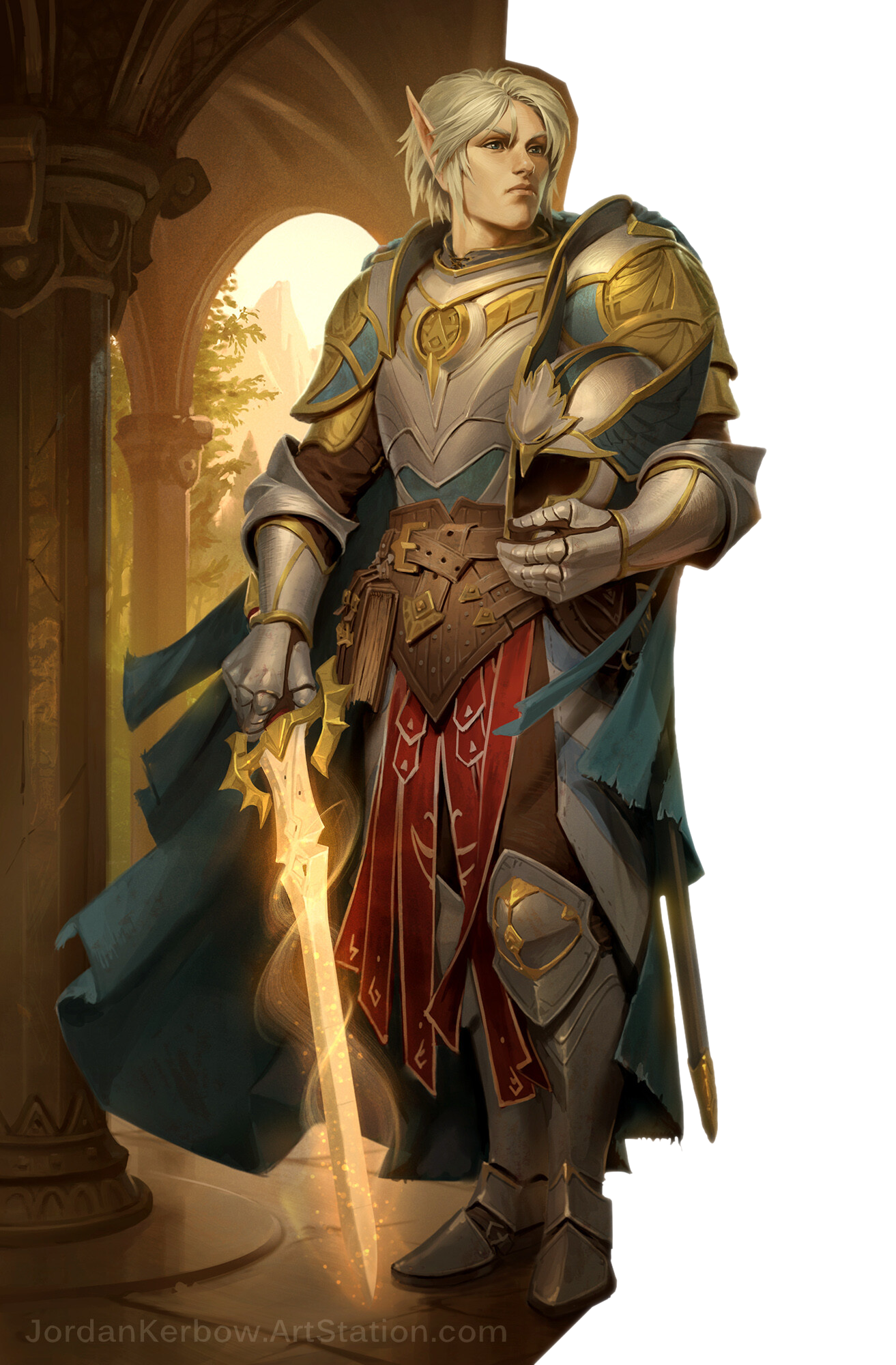
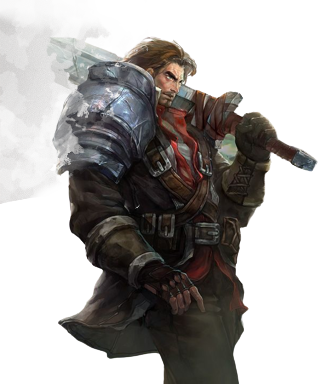
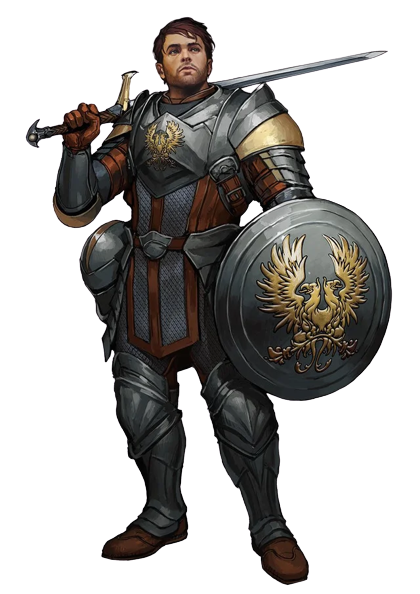
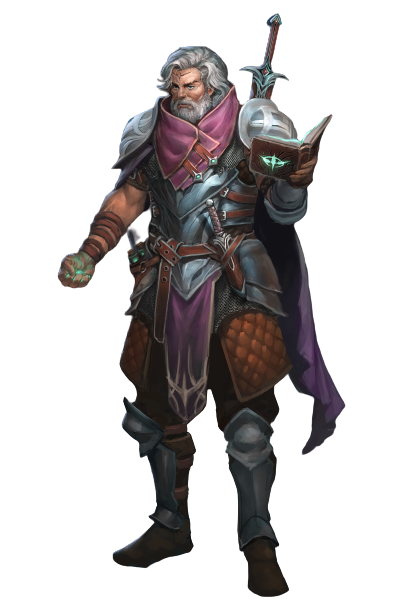

Mystic Herald Spellcasting
| Guardian Level | Cantrips Known | Spells Known | 1st Level | 2nd Level | 3rd Level | 4th Level |
|---|---|---|---|---|---|---|
| 3rd | 3 | 3 | 2 | — | — | — |
| 4th | 3 | 4 | 3 | — | — | — |
| 5th | 3 | 4 | 3 | — | — | — |
| 6th | 3 | 4 | 3 | — | — | — |
| 7th | 3 | 5 | 4 | 2 | — | — |
| 8th | 3 | 6 | 4 | 2 | — | — |
| 9th | 3 | 6 | 4 | 2 | — | — |
| 10th | 4 | 7 | 4 | 3 | — | — |
| 11th | 4 | 8 | 4 | 3 | — | — |
| 12th | 4 | 8 | 4 | 3 | — | — |
| 13th | 4 | 9 | 4 | 3 | 2 | — |
| 14th | 4 | 10 | 4 | 3 | 2 | — |
| 15th | 4 | 10 | 4 | 3 | 2 | — |
| 16th | 4 | 11 | 4 | 3 | 3 | — |
| 17th | 4 | 11 | 4 | 3 | 3 | — |
| 18th | 4 | 11 | 4 | 3 | 3 | — |
| 19th | 4 | 12 | 4 | 3 | 3 | 1 |
| 20th | 4 | 13 | 4 | 3 | 3 | 1 |
Vocalization
At 3rd level, the range of your guidance cantrip and your ranged spells increase by 30 feet.
Emboldening Magic
Starting at 6th level, when you cast a non-cantrip spell, you can choose a creature other than yourself within 30 feet of you to gain temporary hit points equal to your Inner Fire die.
Aggravating Spell
By 13th level, your spells carry your taunting intent with them. When you damage a creature with a spell on your turn, it has disadvantage on saving throws against your Daring Taunt feature.
Deflective Ward
At 18th level, you are able to channel your arcane magic into a defensive wall that protects you and your allies from harm. As bonus action, you raise your defenses and a translucent wall of arcane magic springs into existence in front of you. Choose and place a 25 foot long, 10 foot tall panel such that the center of the panel intersects an edge of your space. Whenever you move, the walls moves with you. At the start of each of your turns you can re position the wall into any position that follows the original placement rules. While the wall is raised your speed is reduced by 10 feet. You can dismiss the wall at any time (no action required).
The wall functions as a physical wall with a maximum number of hit points equal to four times your guardian level. The wall has an AC equal to your Guardian save DC and automatically fails saving throws to resist spells and other damaging effects. The wall is considered total cover against spells and weapons attacks that would pass through it. The wall is immune to psychic & poison damage. When the wall is reduced to zero hit points it dissipates, you take any remaining damage as psychic damage, and the wall cannot be raised again until it regains hit points.
When you finish a Long rest, the wall regains all of its missing hit points.
Oathsworn
Guardians that live by the oathsworn defensive archetype have or make a sworn oath to protect a specific person with their life. An oathsworn guardian might swear an oath out of love, loyalty, debt or some other reason of grand importance. Whatever their reason, oathsworn guardians all share the common goal of protecting their chosen companion, no matter the consequences.
Oathsworn Bond
You dedicate yourself to protecting a member of your party with stoic intensity. When you select this subclass, you swear an oath to protect a willing friendly creature who then becomes your Bonded Companion. You remain bonded this way until your Bonded Companion dies or frees you from your oath. If your bond should end, you must wait at least 24 hours before swearing another oath. When you use your Stand Behind Me feature in response to your Bonded Companion taking damage, you can do so without expending your reaction.
Guardian Angel
Starting at 3rd level, you are never far when your Bonded Companion needs help. When your Bonded Companion ends their turn more then 10 feet away from you, you can use your reaction to move up to half of your movement speed towards them.
Helpful Hand
Also at 3rd level, when you take the Help action to assist your Bonded Companion with a skill check that they are proficient in or vice versa, the target of the Help action may add your Inner Fire die to the result.
Bolstering Resolve
Starting at 6th level, your strong will to protect your companion inspires them to press on. If your Bonded Companion is within 30 feet of you when you reduce damage with your Inner Fire feature, they can use their reaction to gain temporary hit points equal to the amount of damage reduced + your charisma modifier.
Unspoken Word
By 6th level, you and your companion can understand what each other are thinking without the need of words. While you can see each other, you and your Bonded Companion can communicate simple ideas through facial expressions and behaviors that are imperceptible to others. You must be bonded with your current companion for at least 7 days to use this feature.
Comforting Bond
At 13th level, being near each other sets both of your minds at ease. While you are within 30 feet of each other and both of you are conscious, you and your bonded companion are immune to the frightened condition and you both can add your Inner Fire die to Wisdom saving throws.
No Matter the Cost
At 18th level, you will defend your companion until the very end. When you use your Stand Behind me feature on your Bonded Companion, you can choose to automatically reduce the damage they take to 0.
If using your Stand Behind Me feature reduces you to 0 hit points, your companion is inspired by your sacrifice. They can choose to gain temporary hit points equal to your guardian level and they can add your Inner Fire die to attack rolls, damage rolls, and saving throws until the end of their next turn.
Once you use this feature to inspire your companion, you cannot do so again until you complete a short or long rest.
Warden
Guardians that embody the Warden defensive archetype have honed their defenses to a ridiculous degree. These guardians train day in and day out to ensure that nothing stands a chance of bypassing their guard.
Impenetrable Guard
When you choose this subclass at 3rd level, you shore up any remaining holes in your defense. After you reduce damage with your Inner Fire feature, you can use your reaction to add an additional Inner Fire die + your Constitution modifier to the damage reduction.
When you use this feature, you can reduce damage to zero using your Inner Fire feature. If you reduce damage to zero with your Inner Fire feature, you can choose to gain temporary hit points equal to any unused damage reduction.
Guarded Negotiations
Also at 3rd level, your guard is raised in all circumstances, not just on the battlefield. Creatures have disadvantage on Wisdom (Insight) checks against you.
Ever Vigilant
At 6th level, you are always on the lookout for threats against the lives of yourself and your companions. You gain the following benefits:
- You cannot be surprised while you are conscious
- You can add your Charisma modifier to initiative rolls
Superior Defense
Beginning at 13th level, your defenses are legendary. You add +1 to the total each time you roll your Inner Fire die.
Relentless Defender
At 18th level, you are relentless in your pursuit of defending your allies. If you are able to see or hear at least one living ally when you are reduced to 0 hit points but not killed outright, roll 1d20. On a result of 6 or greater, you can choose to drop to 1 hit point instead.
When you roll below a 6 for this effect, you cannot use this feature again until you complete a short rest

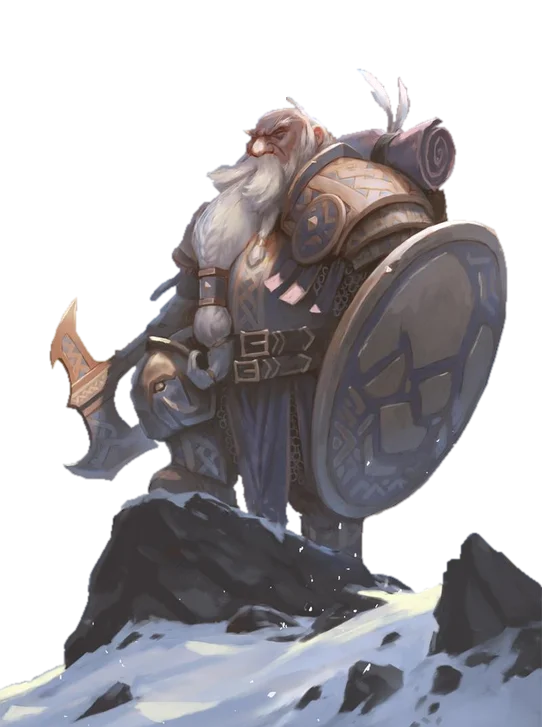
Renegade
Renegades are oddities among guardians. These foul-mouthed mercenaries who rarely concern themselves with the well-being of their party hardly fit the definition of guardian. However, through a mix of ludicrous taunts and martial competence, they tend to draw the attention of their foes regardless.
Is That All Ya Got?
When you choose this subclass at 3rd level, combat becomes a conversation to you... and you aren't the most polite conversationalist. When a creature within 30 feet of you attacks you, you can use your reaction to insult it. The creature must make a Wisdom saving throw or become blindly enraged by your insult. On a failure, the creature must immediately use its reaction to recklessly charge half of its movement speed directly towards you and you gain advantage on your next attack roll against it.
Interrogation Tactics
Also at 3rd level, you gain proficiency in the Intimidation skill. If you are already proficient in intimidation, your proficiency bonus is doubled for any ability check you make that uses intimidation instead. Additionally, you can use blackmail, insults, or some other method to draw information out of a target. After you spend 10 minutes interacting with them in close proximity, you ask them a yes or no question and make a Charisma (Intimidation) check contested by a Wisdom (Insight) check from the target. If you succeed, the target must truthfully answer yes, no, or I don't know.
Once you use this feature on a creature, they are immune to it for the next 24 hours.
Extra Attack
Beginning at 6th level, you can attack twice, instead of once, whenever you take the Attack action on your turn.
Audacious Fighting
Starting at 13th level, your fighting style itself distracts and pisses of your opponents. After you hit a creature with a weapon attack, it has disadvantage on Wisdom saving throws until the end of its next turn.
Are You Even Trying!?
Starting at 18th level, you can respectfully tell one of your allies that they aren't performing at their best. As a bonus action, choose a creature within 60 feet of you that can hear you. They gain the following benefits for 1 minute:
- They are immune to the frightened condition
- Once on each of their turns the creature can roll your Inner Fire die and add the number rolled to one ability check, attack roll, or damage roll it makes. The creature can wait until after it rolls the d20 before deciding to use the Inner Fire die, but must decide before the DM says whether the roll succeeds or fails.
- At the start of each of their turns, they gain temporary hit points equal to your Inner Fire die
This effect ends early if the target is incapacitated or dies. Once you use this feature, you can't use it again until you finish a long rest.
Wyrmguard
Legend says that the first Wyrmguard defended Astilabor, the draconic goddess of wealth, from the time she was a destitute wyrmling until her ascension to godhood. Grateful to her guardian and recognizing a debt to be paid, the new goddess taught them the secrets to the legendary resilience of her kin. Whether learned from dragons themselves or passed down through generations, Wyrmguards harness the skills of dragons to defeat their enemies and defend their allies.
Draconic Disciple
You've learned much from the tutelage of dragons. You gain the following benefits:
Draconic Presence. If you fail a Charisma (Intimidation) or Charisma (Persuasion) check, you can use your reaction to reroll the check, as you tap into the mighty presence of dragons. Once this feature turns a failure into a success, you can't use it again until you finish a long rest.
Draconic Blows. You can change the damage type of your melee weapon attacks to acid, cold, fire, lightning, or poison.
Tongue of Dragons. You learn to speak, read, and write Draconic or one other language of your choice.
Frightful Glare
Your gaze invokes the fear of dragons in your enemies, freezing them in terror. When a creature starts its turn within 30 feet of you, you can use your reaction to force it to make a Wisdom saving throw or have its speed reduced to 0 until the end of its turn.
You can use this feature a number of times equal to your Charisma modifier. You regain all expended uses when you complete a short rest.
Draconic Aura
At 6th level, you can summon the elemental energy of dragons to assail your enemies. As a bonus action, you create a 10 foot wide aura around yourself. Choose a damage type from acid, cold, fire, lightning, or poison. Creatures that end their turn in the aura take 1d6 damage of the chosen type. The aura lasts until you choose to end it (no action required).
The damage of this feature increases to 2d6 when you reach 13th level in this class.
Legendary Resistance
At 13th level, you inherit the innate resistance of your Draconic teachers. When you fail a saving throw, you can choose to succeed instead.
Once you use this feature, you cannot do so again until you complete a long rest.
Wyrmguard's Awakening
At 18th level, when you are reduced to 0 hit points, you can choose to ascend to a draconic form instead. Reset your current hit point total to an amount equal to three times your Guardian level or your hit point maximum (whichever is lower) and you gain a flying speed of 60 feet for the next 10 minutes. Then, you regain any expended uses of Frightful Glare and Legendary Resistance.
Once you use this feature, you cannot do so again until you complete a long rest.
Shield Brawler
Shield Brawler Guardians take the saying "The best offense in a good defense" to heart. By using their shields as weapons they are capable of maintaining a staggering defense and a crippling offense simultaneously. On the battlefield, they use their shields and overwhelming physicality to throw enemies around, knock them down, and leave them dazed.
The Best Offense...
When you choose this subclass at 3rd level, you learn how to use shields not only for defense but also as bludgeoning weapons. While you are wielding a shield, you can choose to switch your grip on a shield as a bonus action. You grip determines which traits the shield has when used as a weapon:
Knuckle Grip. The shield is a melee weapon with a reach of 5 feet that deals 1d6 bludgeoning damage and has the Light and Thrown(range 30/90) properties.
Forearm Grip. The shield is a melee weapon with a reach of 5 feet that deals 1d8 bludgeoning damage and has the Thrown(range 20/60) properties.
Two-Handed Grip. The shield is a melee weapon with a reach of 5 feet that deals 1d12 bludgeoning damage and has the Heavy and two-handed property.
If a shield grants a magical bonus to AC, it is also applied to attacks and damage rolls using the shield.
Fighting Style
At 3rd level, you adopt a particular style of fighting as your specialty. Choose one of the following options. You can't take the same Fighting Style option more than once, even if you get to choose again.
Defense
While you are wearing armor, you gain a +1 bonus to AC.
Two-Weapon Fighting
When you engage in two-weapon fighting, you can add your ability modifier to the damage of the second attack.
Unarmed Fighting
Your unarmed strikes can deal bludgeoning damage equal to 1d6 + your Strength modifier on a hit. If you aren't wielding any weapons or a shield when you make the attack roll, the d6 becomes a d8.
At the start of each of your turns, you can deal 1d4 bludgeoning damage to one creature grappled by you.
Reactive Fighting: Takedown
You use brute force to disable those who would target your allies. When a creature within 10 feet of you makes a melee attack against a target other than you, you can use your reaction to move up to 5 feet towards it and attempt to grapple or shove it.
Extra Attack
Beginning at 6th level, you can attack twice, instead of once, whenever you take the Attack action on your turn.
Shield Bash
At 13th level, you can slam creatures hard enough that they are temporarily dazed by your attack. When you hit another creature with a melee weapon attack using a shield, you can attempt to stun it. The target must succeed on a Constitution saving throw or be stunned until the end of your next turn.
You can use this feature a number of times equal to your Charisma modifier. You regain all expended uses when you complete a short rest.
Wrecking Ball
At 18th level, you can build up momentum to become all but unstoppable. Your speed increases by 10 feet. If you've moved at least 10 feet in a straight line before you make an attack with a shield, your next attack made with a shield gains the following effects:
- It deals an additional 2d12 damage
- On a hit, the target must make a Strength saving throw or be pushed up to 10 feet directly away from you and knocked prone. Targets that are two or more sizes larger than you have advantage on their saving throw.
Want more Guardian?
Become the bane of those that would abuse their arcane powers with the Mage Breaker Guardian Subclass on my DriveThruRPG page.
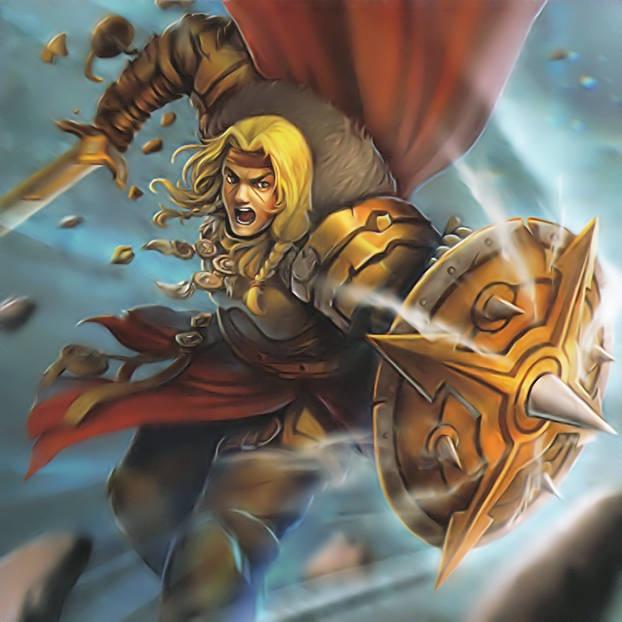

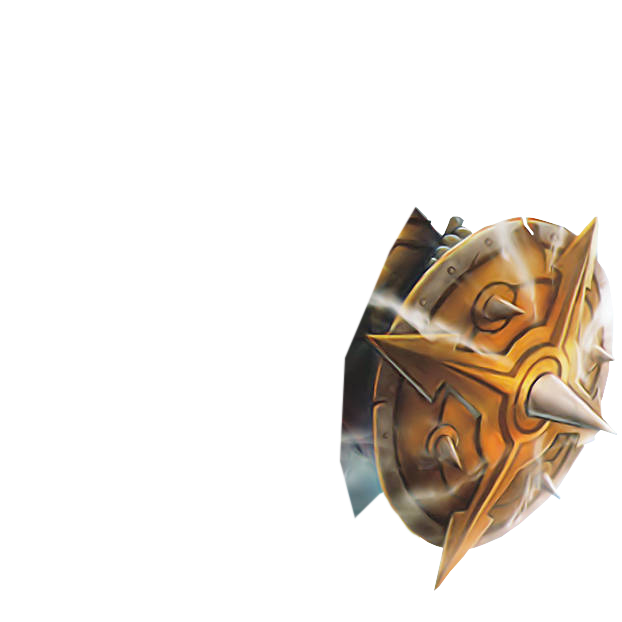

The Guardian
Version Info
This is Version 4.8 of the Guardian class, created by Xpertranger
Art Credits
- Front Cover: Fallen Knight by Volmi Games
- Guardian Character (Page 3): Goldenskull Templars by Jihwan HA
- Castle Background (Page 3): Castle by Ji Young Joo
- Wooden Shield (Page 3): Hand painted Rounded Shield by Dennis Griesheimer
- Battle Art (Page 5): Tower by Michalivan
- Mystic Herald Character: Arcane Warrior by Charlo Nocete
- Renegade Character: Old Rugged Garen Splash Art from League of Legends
- Oathsworn Character: Grey Warden by Yama Orce
- Warden Character: Gorimbur the dwarven Fighter by Bob Kehl
- Shield Brawler Art: Bashing Shield by 1157981433
- Back Cover: Warrior Class by Randy Vargas
Enjoy My Work?
Find more of my content on the following links
Visit my DriveThruRPG page to support the creation of more content like this and gain access to premium content
System Reference Document 5.1
This work includes material taken from the System Reference Document ("SRD 5.1") by Wizards of the Coast LLC, available at https://media.wizards.com/2023/downloads/
dnd/SRD_CC_v5.1.pdf